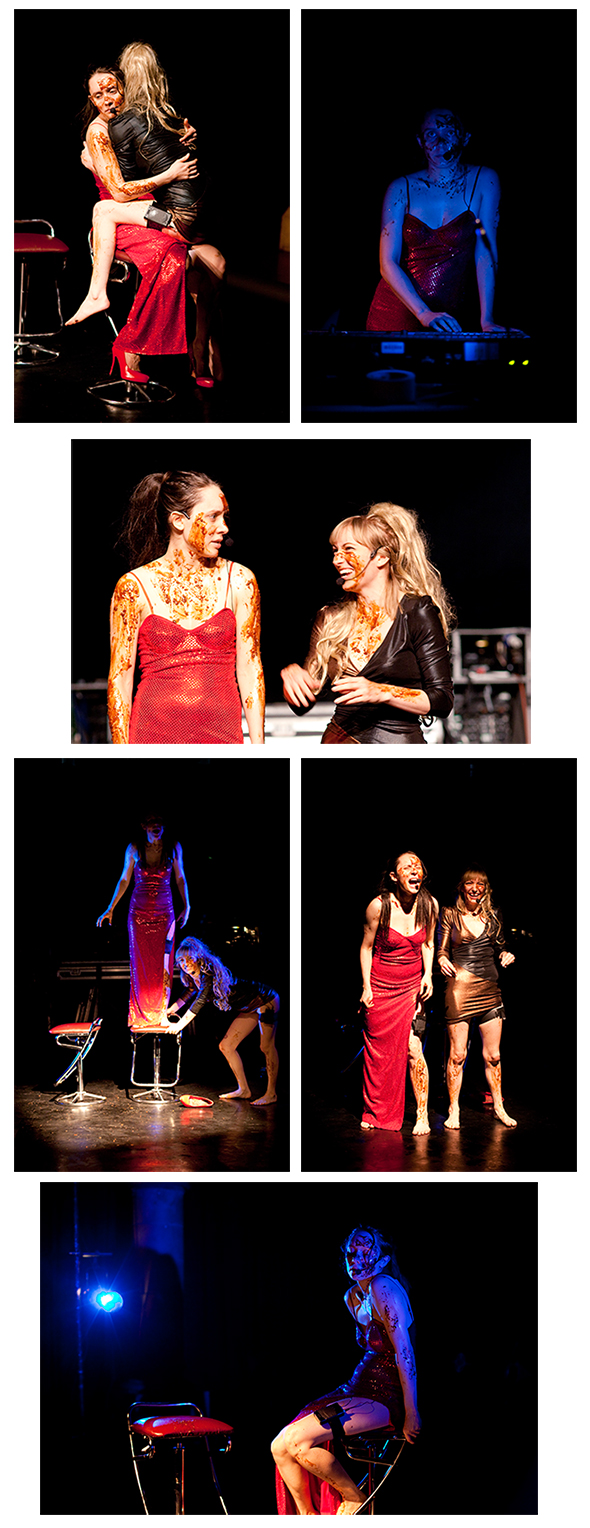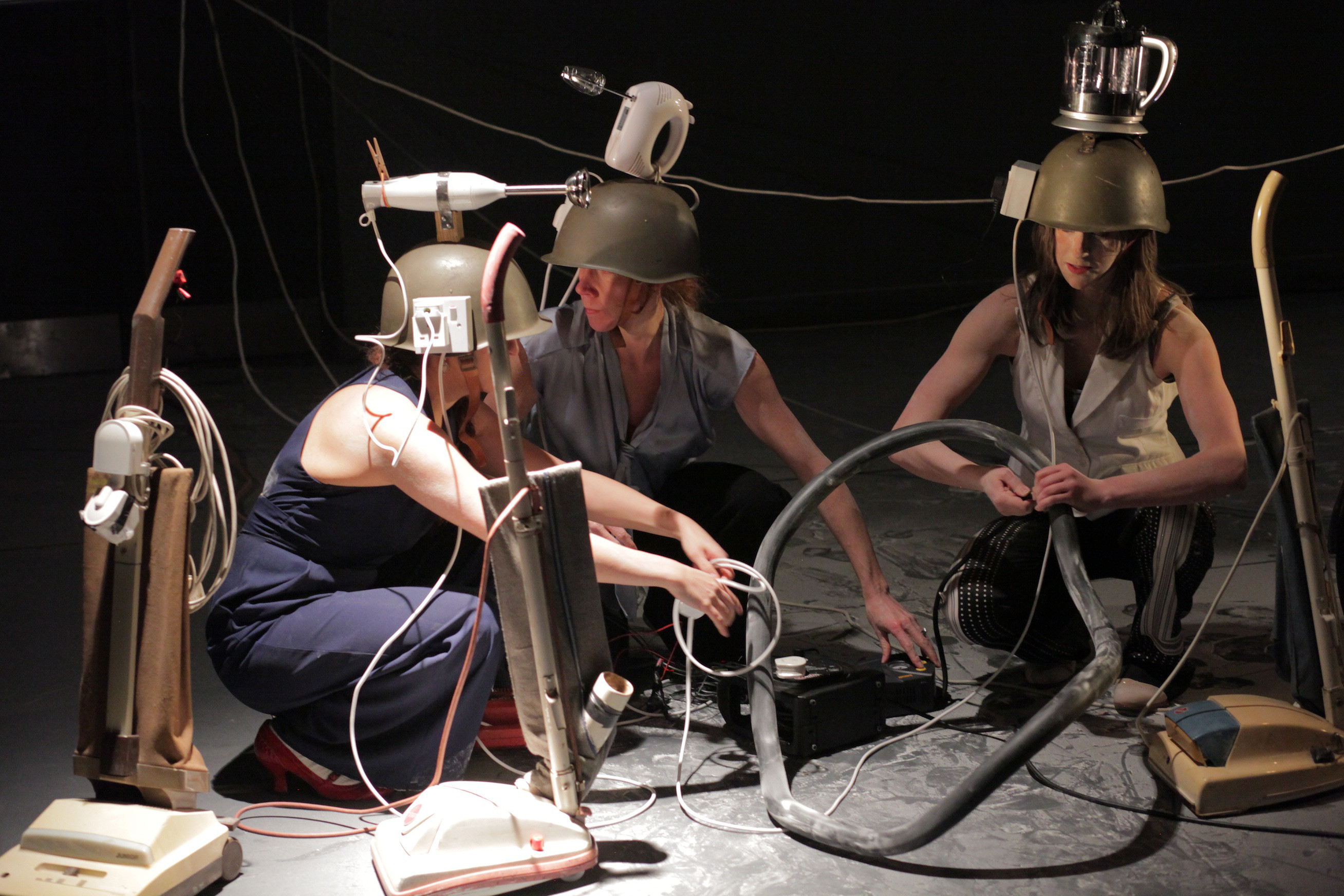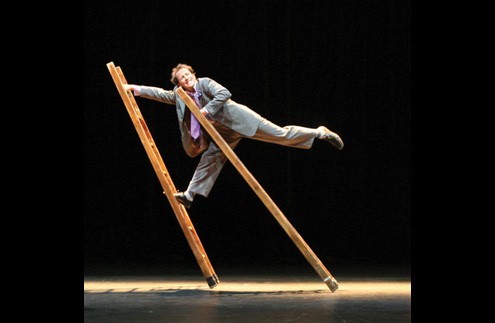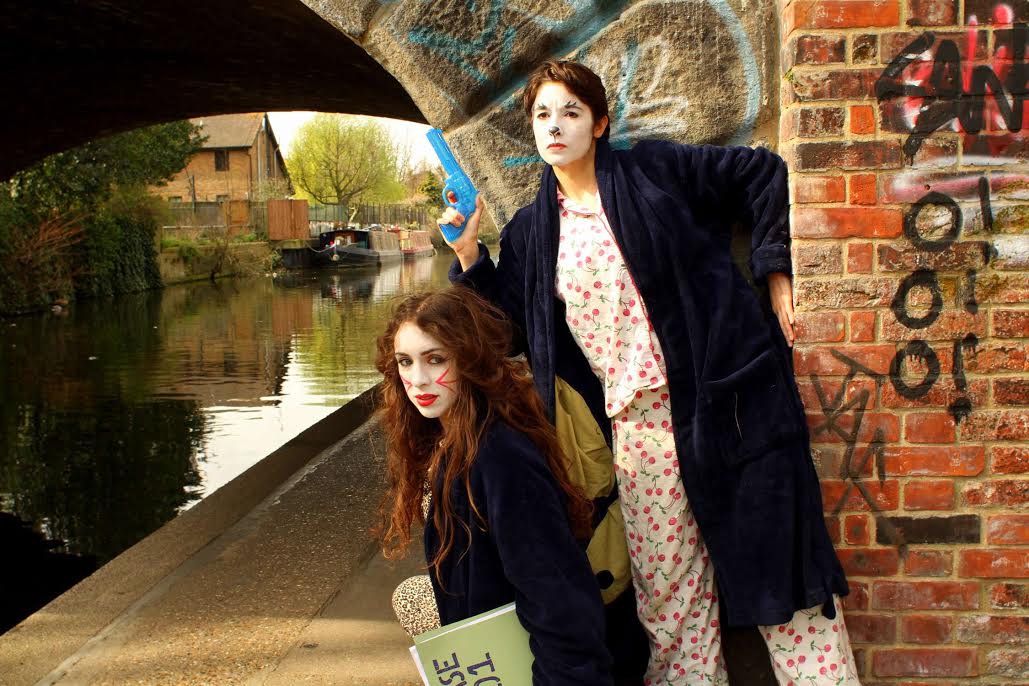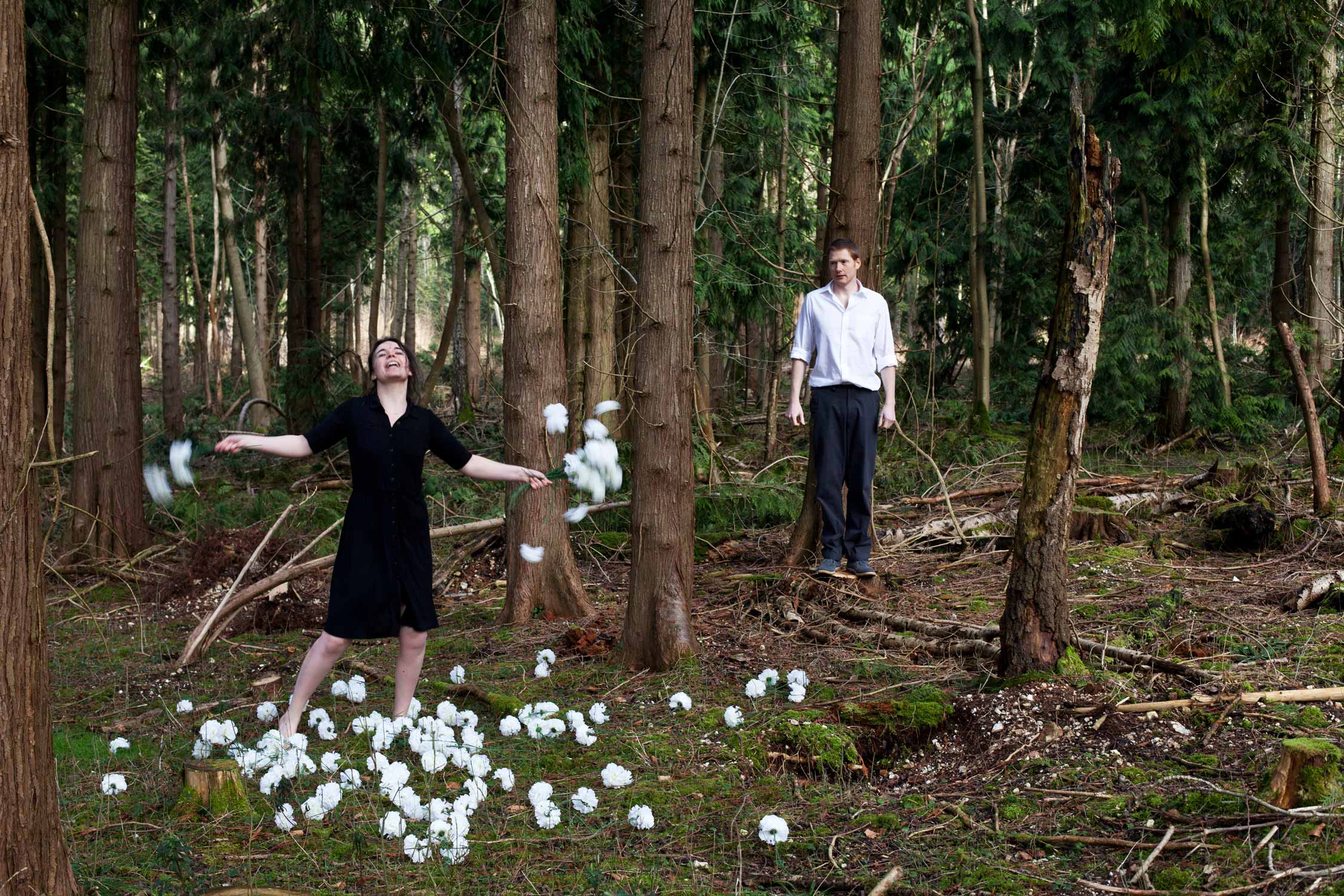Welcome, welcome – come inside, take a look around. Welcome to Number 1, The Plaza. Our house is a very very very nice house. And you’re very, very welcome. Tonight is party night and the door is open.
Two young women circle the performance space, dressed in slutty evening wear, one wearing killer heels, one barefoot, both covered in – what? Mud? Chocolate? Shit? Here’s the kitchen, and here’s the bathroom, and here’s the bedroom. Oops no, you can’t look in there, that’s where they’ve tossed all the – shit. As we take the imaginary tour the small blonde one (Lucy) starts to scamper faster, puppy-like. The tall brunette one (Jen) loses a shoe, which gets stuck in the – what? Surely not shit? – on the floor.
Taking the form of an ‘evening with’ cabaret, the show is built around two clownish characters, Jen and Lucy, here to entertain us with witticisms and wisecracks and songs (from A Little Night Music and Chess, amongst other musical theatre delights). In between, they wander back and forth to the DJ decks, pour and consume drinks, fiddle with the lighting, spin on revolving kitchen stools (sometimes sans knickers), and cat-fight. Although I’m pretty sure the company define themselves within the parameters of live art, the set-up is classic clown, with one high-status character (Jen) always striving to get and maintain the upper hand, whilst the chirpy little one (Lucy) constantly tries to win her partner’s and the audience’s affection by cranking up the volume on pranks and gags. Morecambe and Wise it’s not, but the connections are there to see, plain as could be. If Morecambe and Wise came back as a pair of feisty young females, maybe this is what they’d be.
At an hour and a half, it’s a show that feels over-long – although much of it, particularly at the start and the finish, feels like deliberate audience-testing. Will you stay or will you go? I have an odd reaction to it. I spend the first 15 or 20 minutes wanting to get out, not in, the back of the van, down on the road and away from them (a response shared by my colleague Edward Rapley when he witnessed them compering Night Watch at Cambridge Junction). But then – around about the time they do a spectacular live rendition of Send in the Clowns, emotive warbles to die for – it switches, and I’m suddenly totally engrossed in their world. Their stay in Edinburgh was brief – just two nights at the renegade Forest Fringe – but this is a show doing the rounds, with a whole raft of supporters (from Tom Thumb theatre in Margate through to the Almeida) so it’s bound to fetch up somewhere else very soon. If you get a chance to join the party, be brave, step in – although be careful what you step in.

